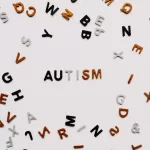In an era where antibiotic resistance poses a significant global health threat, new research highlights the often-overlooked challenges of bringing life-saving antimicrobials to market. A recent study, published in the Academy of Management Proceedings, reveals that the soaring costs of drug commercialization are stifling innovation in the field of antibiotics, hindering efforts to combat the growing crisis.
The study, led by Dr. Sina Khoshsokhan, Assistant Professor of Strategy and Entrepreneurship at the Leeds School of Business, delves into the complexities surrounding the commercialization of new antibiotics. While scientific advancements in drug discovery have been promising, the path from the laboratory to market-ready drugs is fraught with financial and regulatory hurdles.
“As researchers in innovation, we often focus on the research phase of drug development, but the complexities of commercialization are frequently overlooked,” Khoshsokhan stated. “We have a wealth of new discoveries, but without effective pathways to market, many promising innovations never see the light of day.”
Dr. Khoshsokhan’s research utilized data from Clarivate, a company that tracks drug discovery, development, regulatory affairs, and market access in pharmaceutical and biotech firms. He compared the development trajectories of antimicrobial candidates with drugs targeting immune-related diseases. His findings revealed a troubling trend: the commercialization of antibiotics is far more challenging due to stringent regulatory requirements and the extensive clinical trials necessary to prove safety and efficacy. These requirements result in significant financial burdens that deter many companies from investing in antibiotic research.
Large pharmaceutical corporations, Khoshsokhan pointed out, tend to prioritize developing long-term, profitable medications for chronic conditions like diabetes and cardiovascular diseases, leaving a gap in the antibiotic market. “This misalignment of incentives has resulted in a troubling gap,” Khoshsokhan explained. “Startups are often the source of innovative ideas, but without partnerships with larger firms, many promising inventions never reach patients.”
The consequences of this gap are severe. Antimicrobial resistance claims approximately 700,000 lives annually worldwide, and if left unchecked, the death toll could rise to 10 million by 2050, surpassing cancer-related deaths, according to a 2019 report by the UN Interagency Coordination Group.
To bridge this gap, Khoshsokhan advocates for a new approach that encourages collaboration between startups and larger corporations, offering incentives to invest in antibiotic development. “Antimicrobial resistance is a grand challenge that warrants attention from both natural and social sciences,” he emphasized. “We need more interdisciplinary research to combat this issue effectively.”
The significance of Khoshsokhan’s work has been recognized by the Academy of Management, where his paper won the Strategic Management Division’s Distinguished Paper Award for its contributions to understanding the commercialization challenges in drug development.
Despite the current obstacles, Dr. Khoshsokhan remains optimistic. He believes that with collaboration across the pharmaceutical industry, there is potential to foster innovation and ensure the development of critical antibiotics. “It’s crucial that we encourage not just startups but also larger firms to invest in the health of our society,” he said. “We can’t afford to neglect the development of antibiotics in the face of rising resistance.”
As the world grapples with the growing threat of antibiotic resistance, Khoshsokhan’s research offers a vital call to action—highlighting the importance of innovation, collaboration, and investment to ensure a future where life-saving antibiotics remain accessible.
More information:
Sina Khoshsokhan, The Costs They Are a-Rising: Commercialization Costs and the Innovation Process in Drug Development, Academy of Management Proceedings (2024). DOI: 10.5465/AMPROC.2024.292bp












